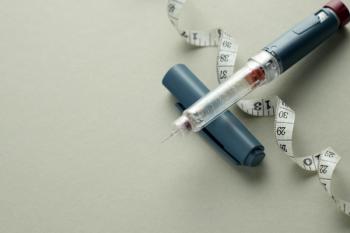
How Will Patients Benefit From Medicare Drug Price Negotiations?
The Congressional Budget Office last year estimated that price negotiation will lower average drug prices in Medicare and will reduce the budget deficit by $25 billion in 2031, including lowering Part D spending by $14 billion and Part B spending by $9 billion. Other federal spending will be lowered by $1 billion.
Beginning Feb. 1, 2024, the Centers for Medicare and Medicaid Services (CMS) will send proposals to the manufacturers of the first 10 drugs selected for negotiation under the 2022 Inflation Reduction Act (IRA). Plans are for CMS and each company to meet up to three times during the spring and summer of 2024.
But questions remain about what CMS officials want to achieve and the long-term impact of drug price negotiation.
“CBO has overestimated the potential savings of negotiations using their current modeling, and they also have underestimated their impact on future innovation,” Peter Rubin, executive director of No Patient Left Behind, a nonprofit dedicated to creating and maintaining patient access to affordable prescription drugs, said in an interview.
The Congressional Budget Office last year
Rubin said the concern is that any savings may not be passed to Medicare beneficiaries. “Why go through all the disruption of the biotech ecosystem is patients don’t see lasting benefits and savings not passed on to beneficiaries,” he asked.
CMS had indicated that the drugs selected for price negotiation accounted for $50.5 billion in total Part D prescription drug costs between June 1, 2022, and May 31, 2023. Medicare beneficiaries paid $3.4 billion in out-of-pocket costs for these drugs. (See below for list of the 10 drugs.)
Eliquis, Jardiance and Xarelto top the list for drugs with the highest Medicare spending. Between June 1, 2022, and May 31, 2023, Medicare’s Part D spending on Eliquis was $16.48 billion; Medicare spent $7.08 billion for Jardiance and $6.03 billion for Xarelto. Eliquis (apixaban) and Xarelto (rivaroxaban) both treat patients with atrial fibrillation, a common type of irregular heartbeat. Jardiance (empagliflozin) is used to treat patients with diabetes, heart failure and chronic kidney disease.
In 2022, about 7.7 million Medicare enrollees used one or more of the 10 drugs selected, which represents about 15% of all Medicare Part D enrollees, according to a
The ASPE report also notes that seven of the 10 selected drugs received an R&D tax credit from the U.S. federal government. One of those drugs also has a “government interest” patent, which means the U.S. government contributed support. The report identified Merck’s Januvia (sitagliptin), which treats patients with diabetes, as the product with three patents with a government interest, which focus on the treatment of diabetes with DPP-4 inhibitors. Januvia was the first of this class to be approved by the FDA.
The pharmaceutical industry, through the trade group Pharmaceutical Research and Manufacturers (PhRMA) have indicated that CMS’s negotiation of pricing threatens research and development. PhRMA and many of the manufacturers of the 10 chosen drugs have filed lawsuits.
Rubin said it is likely that manufacturer may not invest as much in the development of oral, small therapeutics. “Our data indicates that small biotech and venture capitalists are starting to move away from small molecules,” he said. “Investors think about revenue as being a barometer. Revenue influences investor behavior, and this could impact new small molecule R&D, but we won’t see the impact until about 5 or 10 years from now.”
Decreased investment in small molecule drug development, he said, could have an impact in the oncology space with larger manufacturers not pursuing additional cancer indications for therapies. “Innovation is not going to stop, but from a societal perspective, we are going to see less R&D,” Rubin said.
Patients will benefit in other ways, however. The IRA will require all Part D plans to provide coverage for all drugs and all dosage forms when the negotiated prices are in effect. The share of Part D enrollees with coverage the 10 drugs ranges from less than 60% for Fiasp/NovoLog and 66% for Stelara to 100% for Eliquis, Entresto, Imbruvica, Jardiance, and Xarelto, according to a September 2023
CMS is also requiring plans to provide a rationale for non-preferred formulary placement. Placing drugs with negotiated prices on preferred tiers is expected to lower out-of-pocket costs because those prices are often the basis of copayments. According to KFF, the rheumatoid arthritis drug Enbrel, the cancer drug Imbruvica, and the psoriasis drug Stelara are placed on the specialty tier many Part D plans, with coinsurance of 30% to 33%, and many insurers place restrictions such as step therapy, quantity limits and prior authorization.
First 10 Drugs Chosen for CMS Medicare Part D Negotiation
- Eliquis (apixaban), which prevents blood clots and stroke
- Jardiance (empagliflozin), which treats diabetes, heart failure and chronic kidney disease
- Xarelto (rivaroxaban), which prevents blood clots and stroke
- Januvia (sitagliptin), which treats diabetes
- Farxiga (dapagliflozin), which treats diabetes, heart failure, chronic kidney disease
- Entresto (sacubitril/valsartan), which treats heart failure
- Enbrel (etanercept), which treats rheumatoid arthritis, psoriatic arthritis, plaque psoriasis, ankylosing spondylitis
- Imbruvica (ibrutinib), which treats chronic lymphocytic leukemia/small lymphocytic lymphoma
- Stelara (ustekinumab), which treats Crohn’s disease, plaque psoriasis, psoriatic arthritis
- Fiasp; Fiasp FlexTouch; Fiasp PenFill; NovoLog; NovoLog FlexPen; NovoLog PenFill (insulin aspart), which treat diabetes
Newsletter
Pharmacy practice is always changing. Stay ahead of the curve with the Drug Topics newsletter and get the latest drug information, industry trends, and patient care tips.



























































































































































